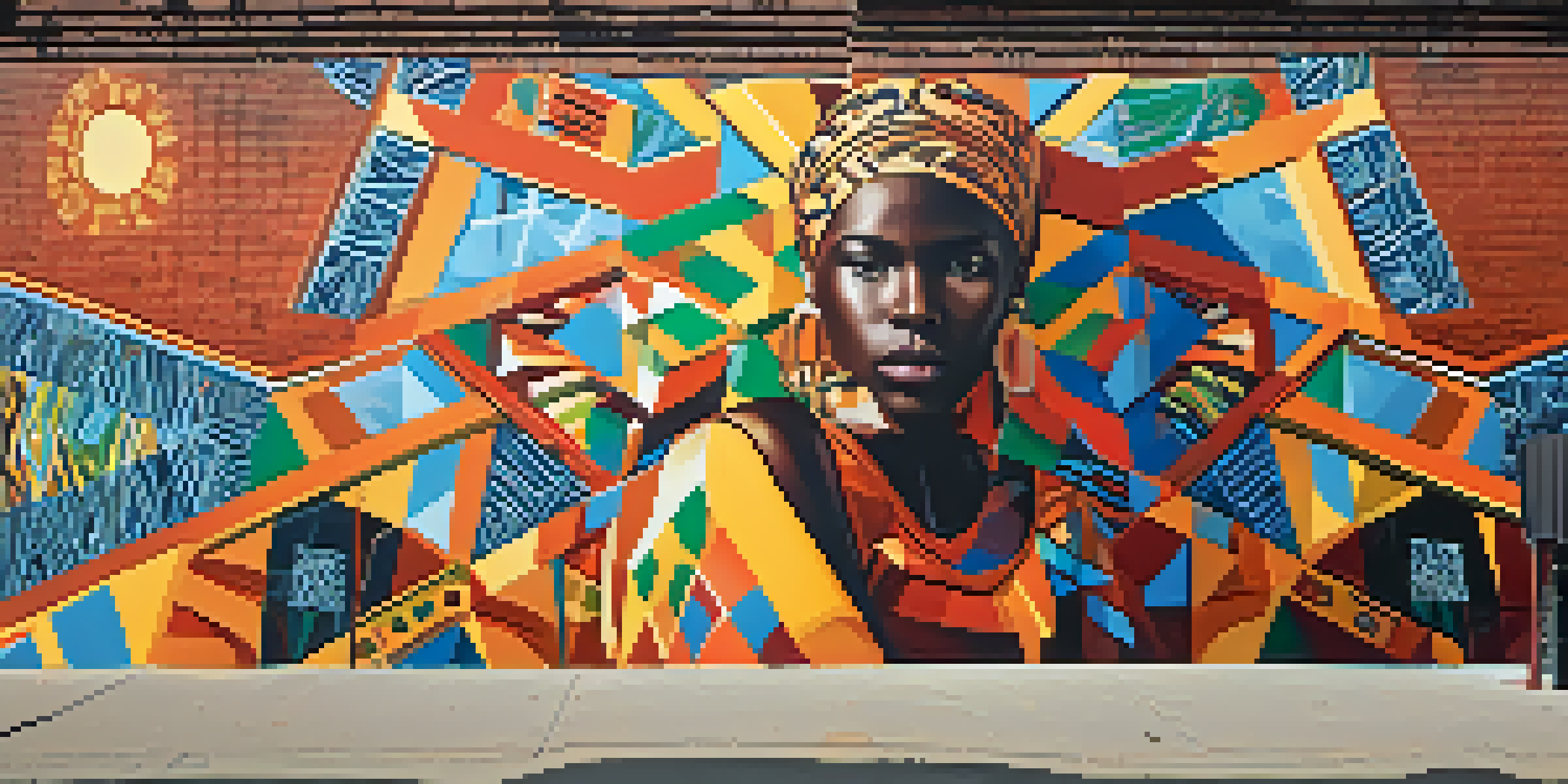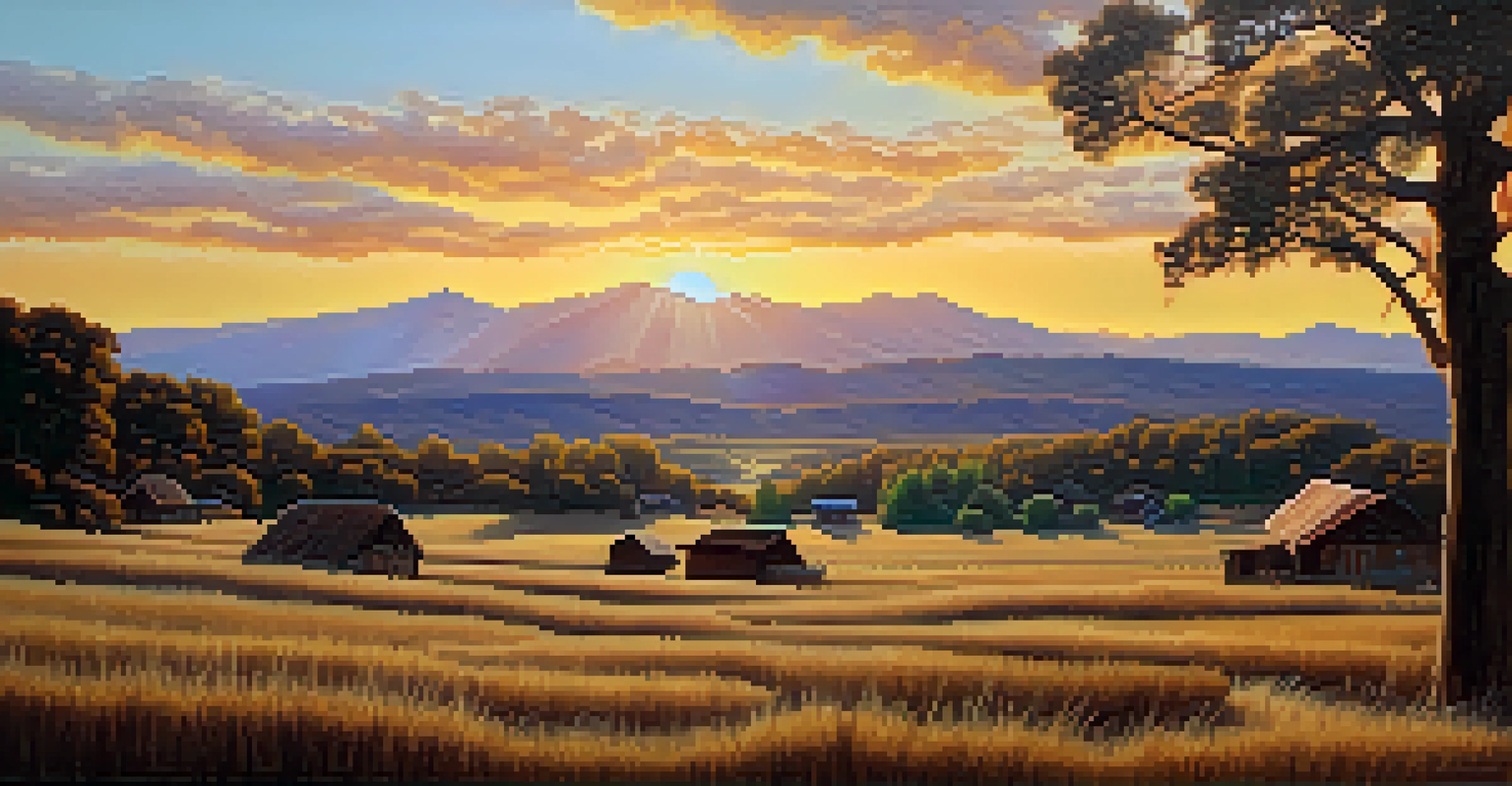Cultural Syncretism in Art: Blending Traditions and Styles

Understanding Cultural Syncretism in Art
Cultural syncretism refers to the blending of different cultural elements, creating something new and unique. In the realm of art, this can manifest through the fusion of styles, techniques, and themes from various traditions. For instance, when artists incorporate motifs from both Indigenous and European art, they create a dialogue between cultures that enriches their work.
Art is the most beautiful of all lies.
This blending not only reflects the diverse influences present in the artist's environment but also speaks to the universal nature of creativity. Artists often find inspiration in the world around them, merging familiar elements with new ones to express their identity and experiences. Ultimately, syncretism in art serves as a testament to the interconnectedness of human expression.
Related Resource
As we delve deeper into this subject, it’s essential to recognize how cultural syncretism not only influences individual works but also shapes entire movements. By examining specific examples, we can appreciate how artists navigate and negotiate their artistic identities in a globalized world.
Historical Examples of Syncretism in Art
Throughout history, art has been a canvas for cultural exchange, with notable examples of syncretism emerging from diverse contexts. One striking case is the fusion of African and European styles in the Harlem Renaissance, where artists like Aaron Douglas combined traditional African motifs with modernist techniques. This blend not only celebrated African heritage but also redefined American art.

Another compelling example is seen in the influence of Islamic art on European Renaissance artists. The intricate patterns and geometric designs of Islamic art inspired artists such as Albrecht Dürer, who incorporated these elements into his own works, creating a beautiful synthesis of styles. This cross-cultural exchange highlights how artists have always looked beyond their borders for inspiration.
Cultural Syncretism Enriches Art
The blending of different cultural elements creates unique artistic expressions that reflect diverse influences.
These historical instances demonstrate that cultural syncretism is not a recent phenomenon; rather, it has been a vital part of artistic evolution. By exploring how different cultures influence one another, we can better understand the richness of our shared artistic heritage.
The Role of Migration in Artistic Syncretism
Migration has played a significant role in fostering cultural syncretism in art, as individuals bring their unique backgrounds and traditions to new environments. When artists relocate, they often blend their native styles with those of their new surroundings, leading to innovative creations. For instance, the Mexican muralist Diego Rivera integrated elements of indigenous Mexican culture with European techniques, creating powerful social commentaries.
Every artist dips his brush in his own soul, and paints his own nature into his pictures.
Moreover, the movement of artists and their ideas across borders has facilitated the exchange of techniques and themes. This melding of influences can be seen in contemporary street art, where urban artists from diverse backgrounds come together to create visually striking pieces that reflect their varied experiences. The result is a dynamic art form that speaks to the complexities of identity in a globalized world.
Related Resource
As we consider the impact of migration on artistic expression, it becomes clear that this movement enriches not only the artists themselves but also the communities they inhabit. The fusion of traditions and styles leads to a vibrant cultural tapestry that celebrates diversity and creativity.
Contemporary Artists Embracing Syncretism
In today’s art scene, many contemporary artists are embracing cultural syncretism, using their work to explore themes of identity and belonging. Artists like Kehinde Wiley and Yinka Shonibare draw on their cultural backgrounds to create pieces that challenge traditional narratives. Wiley’s portraits, for example, incorporate elements of classical European art while celebrating Black identity, resulting in powerful visual statements.
Similarly, Shonibare’s work often juxtaposes Victorian fashion with African textiles, prompting viewers to reflect on colonialism and cultural exchange. By blending these seemingly disparate elements, he creates a dialogue that invites discussion and reflection on cultural heritage. This approach not only enriches the artwork but also engages the audience in a deeper exploration of cultural identities.
Migration Fuels Artistic Innovation
As artists move and merge their native styles with new environments, they foster creative and innovative art forms.
These contemporary artists exemplify how syncretism can be a tool for social commentary and personal expression. By fusing different traditions, they challenge conventions and create art that resonates with a diverse audience.
The Impact of Technology on Artistic Syncretism
Technology has revolutionized the way artists create and share their work, significantly impacting cultural syncretism in art. Digital tools enable artists to mix styles and techniques from across the globe, breaking down traditional barriers. For example, graphic designers can easily incorporate elements from various cultures into their designs, resulting in a seamless blend of influences.
Additionally, social media platforms have become vital spaces for artists to showcase their syncretic work and connect with audiences worldwide. This connectivity allows for a rapid exchange of ideas and styles, further enriching the artistic landscape. Artists can experiment with different cultural elements and receive feedback in real time, fostering collaboration and innovation.
Related Resource
As we navigate this digital age, it’s clear that technology plays a crucial role in the evolution of artistic syncretism. By facilitating cross-cultural dialogue, it empowers artists to explore and express their identities in ever-expanding ways.
Challenges and Critiques of Cultural Syncretism
While cultural syncretism in art is often celebrated for its creativity, it also faces challenges and critiques. One major concern is the potential for cultural appropriation, where dominant cultures borrow elements from marginalized cultures without understanding or respecting their significance. This can lead to misunderstandings and exploitation, which artists must navigate carefully in their work.
Another challenge is the dilution of cultural identities, as the blending of styles may overshadow the unique aspects of the original traditions. Critics argue that in the pursuit of innovation, artists may inadvertently erase the rich histories and meanings behind certain cultural elements. This highlights the need for sensitivity and awareness in the creative process.
Technology Enhances Artistic Fusion
Digital tools and social media facilitate the mixing of global styles, allowing for rapid artistic exchange and collaboration.
Despite these challenges, many artists strive to engage with cultural syncretism thoughtfully. By acknowledging the origins of their influences and approaching their work with respect, they can create pieces that honor diverse traditions while celebrating the beauty of fusion.
The Future of Cultural Syncretism in Art
As we look to the future, cultural syncretism in art is likely to evolve in response to ongoing global changes. With increasing migration, technological advancements, and shifting cultural narratives, artists will continue to explore new ways of blending traditions and styles. This dynamic environment offers endless possibilities for creativity and collaboration.
Furthermore, as society becomes more aware of cultural issues, artists may feel inspired to create work that addresses social justice and celebrates diversity. By engaging with syncretism, they can challenge existing power structures and promote inclusivity in the art world. This movement toward greater representation will enrich the artistic landscape and foster a deeper understanding of cultural identities.

Ultimately, the future of cultural syncretism in art holds great promise, as artists harness their unique experiences to create meaningful, impactful work. By embracing the beauty of diversity, they will continue to push the boundaries of creativity and inspire future generations.